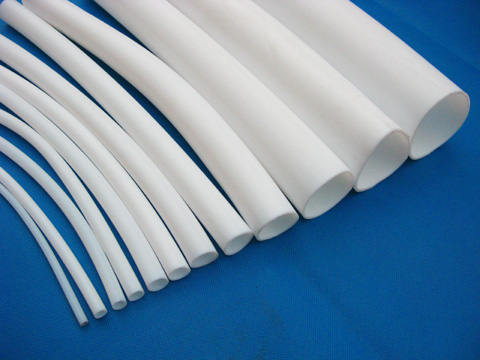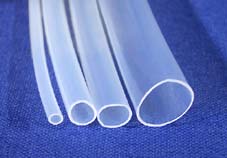Most of the industries such as the steel Industry and chemical processing consistently use fluoropolymer pipes that are made of materials
like PTFE and hoses to carry corrosive
chemicals or highly reactive chemicals.
PTFE pipes are indeed replacing and pipes
made of carbon and other metals.
Polytetrafluoroethylene (PTFE) is a high molecular polymer that is
an integral part of cable and tubing industry because of its unique properties
ranging from electrical properties to chemical inertness
along with high-temperature resistance. This material is heavily used in the manufacturing and industrial sectors because
of its specific properties.
The Properties of PTFE Tubes
The properties of PTFE are unique and sets it
apart from metal pipes carbon pipes.
Thermal properties- PTFE’s heat-resistant
properties enable the tube to withstand temperatures of 680 °F for a stipulated time period under
cryogenic conditions; PTFE tubes remain unchanged even at super high temperatures such as 500 degrees Fahrenheit and it is
as much resistant to cold temperatures almost down to -320 °F.
UV resistance and wearability- PTFE tubing has fairly impressive
UV resistance and wearability quality.
Wear and Friction – PTFE with its smooth surface shows exemplary wear and frictional qualities.
Electrical properties- PTFE tubing with its insulation properties has great electrical properties as it is
a great insulator and has great surface resistivity.
Advanced Fluro Tubes is a renowned
PTFE Tube manufacturer and supplier. They manufacture world-class PTFE tubes that range
from 0.8mm to 28 mm ID and 0.25mm to 3.5 mm wall thickness.
PTFE tubes are flexible tubes and they are
manufactured in various continuous lengths from 300-20 meters. Continuous lengths depend on two things the OD & ID of the PTFE tube. Advanced Fluro tubes also manufacture long
length PTFE rods or ropes that have a
diameter ranging from 2mm-8mm. These PTFE ropes enable
the sealing of applications.
As PTFE tube manufacturer of repute, they are stringent about their quality
checks and ensure extremely tight tolerances which prevent leakage eliminates or reduces scrap.
As a leading PTFE tube supplier, the tubes
are manufactured and delivered right on schedule
ensuring the customers are happy.
Some applications need properties that have increased abrasion
resistance and/or self-lubricating PTFE tubes. Here engineers focus on the application and come up with customized solutions that meet up with application
requirements.
For example, there are numerous
applications that need PTFE tubes with antistatic properties. Advanced Fluro Tubes strive hard to cater to the rising demand for manufactured PTFE tube
That’s not all Advanced fluoro tubes also manufacture virgin PTFE
tubes, and they offer numerous services such as sleeving, end flaring, specific
cut lengths and so on. In specific applications, there is a requirement of one end
of the PTFE tube/sleeve that needs to be
sealed, and the seals need to undergo a quality test so that they are leak proof / watertight at 15 kg/cm2 pressure at the
time of a specific test known as hydro testing. The resulting quality of the
seal is a result of an in-house developed technology.






